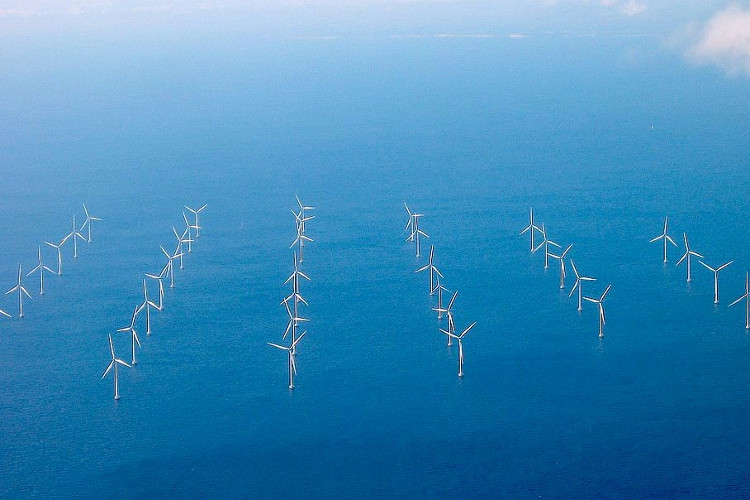France has set itself the ambitious goal of reaching 32% of renewable energy in its energy mix by 2030. Rapid developments in the wind and solar sectors will be necessary to achieve this objective. As a result, more and more off-shore wind turbine projects are developing in France. Their cumulative total power is expected to reach nearly 2 GW by 2021. The connection of offshore wind farms requires an unprecedented level of smart integration due to their remoteness, the characteristics imposed by the marine environment and the high power levels generally at stake. This article proposes a selection of five French innovations allowing the integration of these new wind turbines located at sea.

Offshore wind turbines off Copenhagen – Photo credit: Mariusz Paździora in CC
From offshore to farshore thanks to floating wind turbines
Offshore wind turbines have an advantage over onshore wind turbines: marine winds encounter fewer obstacles, are more sustained, more regular and less turbulent than on land. At equal power, an offshore wind turbine can produce up to twice as much electricity as a wind turbine. While traditional offshore wind turbines are directly installed on the seabed, floating wind turbines, also known as farshore wind turbines, offer the advantage of being built on land and located in areas where the depth of the sea exceeds 50 meters. This is particularly adapted to the French territory, the depth of the coasts often exceeds this limit over one hundred meters from the coast. French companies like EDF, Engie or DCNS have a high level of expertise in this field.
Less loss thanks to direct current
The greater the distance between the coastline and the wind turbine, the greater the challenges of their integration into the electrical grid. The long distance transport of electricity causes significant losses. By converting the alternating current produced by the marine wind turbines into direct current, it is possible to mitigate these losses. Companies such as ABB, Engie, GE Grids Solutions and Siemens have developed advanced skills on this type of installation. They even want to go a step further in anticipation of the next generation of offshore wind farms which will replace their so-called point-to-point links with a real mesh network between wind turbines. Installations of this kind would allow pooling all the wind production of a site and distribute it as a single production. The mesh also makes it possible to guard against cable failures since the electricity produced can take different routes.
Vertical wind turbines are more adapted to marine winds
In Lille, the Nénuphar company has developed a floating wind turbine prototype with a vertical axis of rotation. This technological innovation should eventually surpass the output levels of conventional wind turbines through an aerodynamic effect that increases the performance of the rotor. According to the company, this solution would increase the wind-electricity efficiency in excess of 50% as opposed to 43 to 45% for conventional wind turbines. For now, only prototypes on earth have been tested. The first offshore prototype with a capacity of 2 MW is expected to be installed near Fos-sur-Mer in 2017.
Towards predictive maintenance of offshore wind turbines
Offshore wind farms also raise the problem of offshore maintenance. Companies such as Engie, Schneider Electric or EDF Energy Services are forging partnerships with French SMEs such as Cornis and Acoem to develop predictive maintenance solutions. Based on new sensors embedded in wind turbines and Big Data technologies, these solution make it possible to diagnose the arrival of a breakdown and, hence, limit the use of costly interventions at sea. RTE has developed SafeWind, a similar solution specialised in extreme wind situations.
Optimization of the orientation of blades thanks to meteorological data
Leosphere, in partnership with IFP Energies Nouvelles, has developed the Wise Control solution that makes real time wind speed measurements. With this information, it is possible to optimize the orientation system of wind turbines to improve their wind alignment and increase their performance. Wise Control also helps prevent violent events that could damage the hardware. This translates into managed maintenance costs.
ITEMS International for Think Smartgrids



